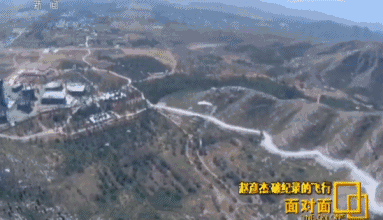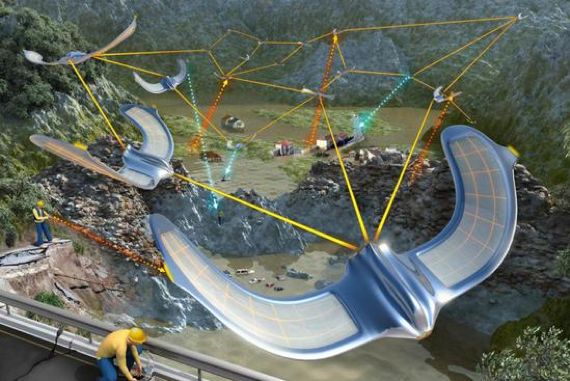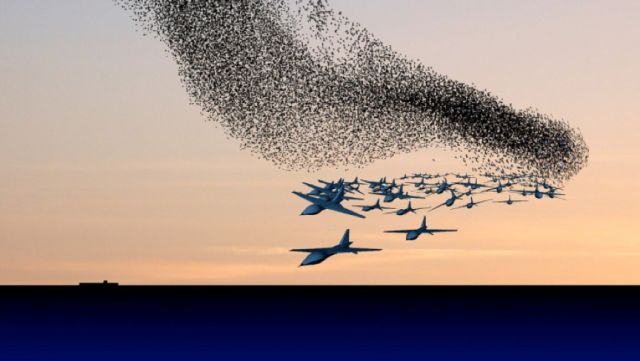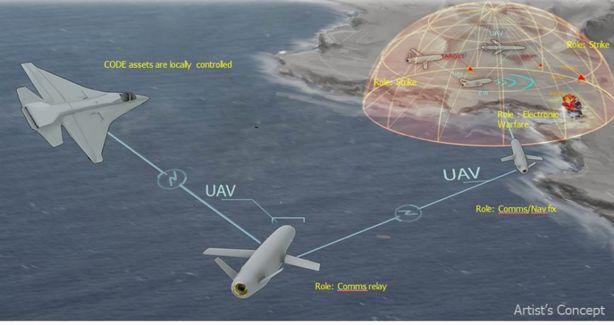Artificial Intelligence
The principle of manipulating hundreds of drones by single person, what kind of future drone group
In recent years, drone technology has taken center stage in domestic military films. In "Aerospace Hunting," drones silently scout enemy positions; in "War Wolf 2," they sweep through crowds; and in "Red Sea Action," they even take down a tank! These cinematic portrayals highlight the growing importance of drones in modern warfare. However, while movies make drones look cool and effortless, the reality is that each drone typically requires a remote operator. Coordinating hundreds of drones simultaneously is no small feat.
But in June 2017, China Electronics Technology Group made a groundbreaking achievement by successfully conducting the coordinated flight of 119 fixed-wing UAVs. This demonstration showcased not only the mass ejection of drones but also their ability to autonomously assemble in the air, form groups, and maintain formation—all under the concept of "cluster intelligence." With this system, just one person can control hundreds of drones at once.

So, what exactly is a drone cluster? It's a group composed of many drones, which can be identical or include different types such as reconnaissance, radar detection, or attack drones. These drones communicate via wireless networks, exchange information, and work together to complete tasks like mission assignment and path planning.
Each drone in the system is an independent unit capable of flying and gathering data on its own. Meanwhile, the entire group can share information with manned aircraft or ground control, enabling efficient management, task distribution, route planning, and coordination between individual drones and the group as a whole.
The following image illustrates a conceptual diagram of multi-UAV collaborative search. Multiple drones with different functions work together to cover larger areas, improving detection accuracy and range.

When multiple UAVs operate in unison, they can expand their detection and attack capabilities, significantly increasing operational efficiency. As the saying goes, "A good man and three gangs" — teamwork makes all the difference.
### Cluster Intelligence: Learning from Bees
Cluster behavior in nature is about cooperation for the benefit of the group while still serving individual interests. Drone cluster technology draws inspiration from this, particularly from the behavior of bees. To simplify operations and allow one person to manage hundreds or even thousands of drones, the system mimics biological swarm behavior.

To achieve this, a cluster management controller must be designed. Using advanced algorithms, the group can independently search for targets like ant colonies or bird flocks, detect obstacles, and share real-time information across the fleet. This allows the group to plan optimal routes, avoid threats, and reach their destination quickly.
Once at the target area, the drones are assigned specific roles based on their capabilities:
- Reconnaissance drones gather environmental data and locate enemy positions.
- Attack drones use the coordinates to plan and execute strikes.
- Combat drones provide protection and prevent enemy interference.
Additional units may handle tasks like deception, communication, and electronic warfare to ensure mission success.
### What Does the Future Hold for Drone Clusters?
Over the past few years, the drone industry has seen rapid growth. Due to their low cost and high efficiency, UAV clusters have attracted significant attention globally. In May 2016, the U.S. Air Force released the "2016–2036 Small UAV System Flight Plan," aiming to develop a small UAV system that operates across air, space, and cyber domains, with fully autonomous human-machine cluster operations by 2036.

The image above shows a simulated combat scenario where a drone cluster works in a complex battlefield environment. It includes both manned and unmanned aircraft, with the manned unit controlling the group. The drones then independently detect enemy positions, identify threats, and share data. Through collaboration, the system calculates the best flight paths and attack plans, maximizing damage and minimizing casualties.

Other global efforts include the EU’s COMETS project for heterogeneous multi-UAV collaboration and Australia’s research into autonomous navigation and environmental awareness.
UAV cluster technology is gaining traction in military applications due to its low cost, scalability, and high intelligence. Its potential extends beyond the battlefield—into civil sectors like agriculture, forest protection, and disaster response. By enabling large-scale collaboration, it can improve detection accuracy, save time, and provide valuable data for critical operations.
Used on systems above 1000 volts, protect equipment from lightning and switching surges.
Lightning Arrester,Distribution Pole,Composite Lightning Arrester,Lightning Rod
Jilin Nengxing Electrical Equipment Co. Ltd. , https://www.nengxingelectric.com